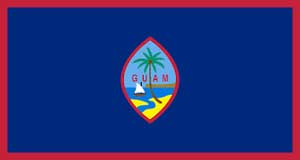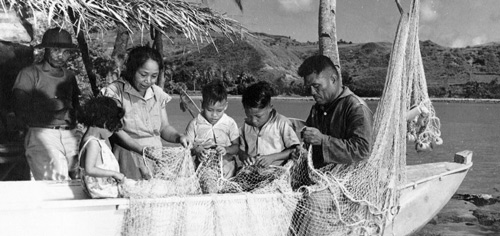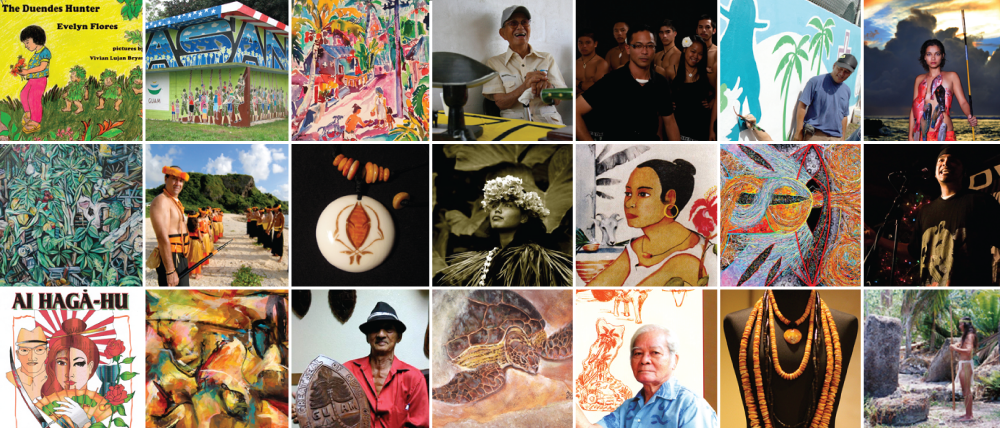POP Cultures: Guam
Map
Flag

Quick facts
Official Name: Territory of Guam
Indigenous Peoples: CHamorus
Official Languages: CHamoru and English
Political Status: Unincorporated Territory of the United States
Capital: Hagåtña
Population: 161,785 (2015 est.)
Greeting: Hafa adai
History and geography

Guam, the largest and southernmost island of the Mariana Islands chain, has a unique and complex cultural history. In the Western Pacific in Micronesia, Guam is well known for its strategic military and economic position between Asia and the North American continent. The Marianas are home to one of the oldest Pacific Island cultures. Archeological evidence indicates that the Marianas Islands were one of the first places to be settled by seafaring peoples, possibly from Island Southeast Asia, more than 4,000 years ago. Marianas prehistory is divided into two broad periods: the Pre-Latte Era (about 4,000 years ago to about 900-1000 AD) and the Latte Era (900-1000 AD to 1668 AD).
Guam is the site of the first Roman Catholic mission and formal European colony in the Pacific islands. The last 400 years of Guam’s history are marked by administrations of three different colonial powers: Spain, the United States, and Japan. With each administration came new challenges and changes for the CHamoru people. Under Spanish rule, the CHamoru people adapted to influences regarding religion, social organization and cultural practices from Spain, Mexico, and the Philippines.
The ceding of Guam to the United States as an unincorporated territory after the Spanish-American War in 1898 introduced CHamorus to democratic principles of government and the modern American lifestyle, while keeping them subjects of a sometimes oppressive US naval administration. Guam also was in a unique position in World War II, when Japan invaded the island shortly after the attack on Pearl Harbor in December 1941. For two and a half years, Guam was occupied by Japanese forces, and the CHamorus were thrown into a war not of their making, until the Americans returned in 1944 to reclaim the island.
Political maneuverings after World War II and the postwar buildup led to even more expansion of US military interests in Guam and the rest of Micronesia, with Guam becoming a hub for economic and commercial development. The easing of military restrictions for entering Guam and the establishment of a local, civilian government have made the island an ideal place for people from all over the world to visit, go to school, find jobs or pursue a variety of economic interests. The different eras of Guam’s history are highlighted with moments of resilience, strength, adaptation, and innovation as the CHamoru people have found ways to adapt to the challenges of cultural and historical change.
Today, Guam has a diverse population that enjoys a rich, multicultural, modern and urban lifestyle, and the spirit, language and culture of the indigenous CHamoru people endures.
Arts and culture

Though traditional arts and crafts nearly disappeared under the influence of colonization, many have re-emerged in the modern day. Island dance, chant, weaving, carving and jewelry making are flourishing on Guam. Contemporary arts such as painting, photography, filmmaking, as well as performance arts such poetry and theater are a part of everyday life in Guam.